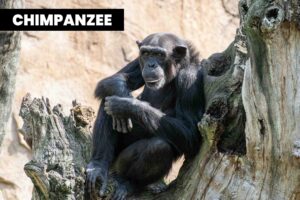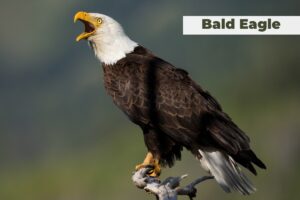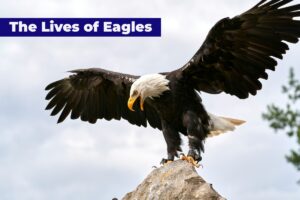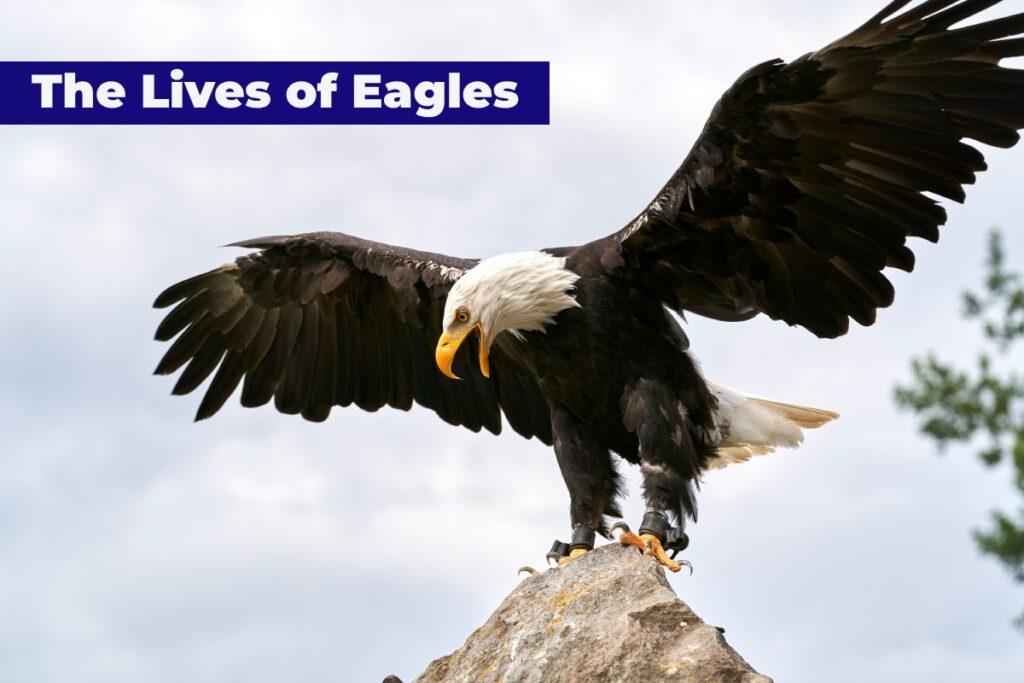
The Majestic Eagle: A Symbol of Power and Freedom
Eagles are among the most awe-inspiring creatures to grace the skies.
With their piercing eyes, powerful wings, and commanding presence, these birds of prey have captured human imagination for centuries.
The term “eagle” doesn’t refer to a single species but rather a broad category of large, carnivorous birds within the family Accipitridae.
Eagles hunt with exceptional skill and adapt remarkably well to diverse environments.
They thrive across the globe, inhabiting dense Eurasian forests, rugged North American landscapes, and vast African savannas.
This article will reveal the world of the eagle, covering its biology, behavior, cultural significance, and ecological role, while answering frequently asked questions about these magnificent raptors.
What Defines an Eagle?
Eagles differ from many animals; they don’t belong to a single genus or species.
Instead, they are large birds of prey that hunt sizable vertebrates, often those exceeding 50 centimeters (about 20 inches) in length.
Eagles belong to several genera within the Accipitridae family, with the genus Aquila—often called “true eagles”—being one of the most prominent.
Other genera, such as Haliaeetus (sea eagles) and Spizaetus (hawk-eagles), also include species we commonly recognize as eagles.
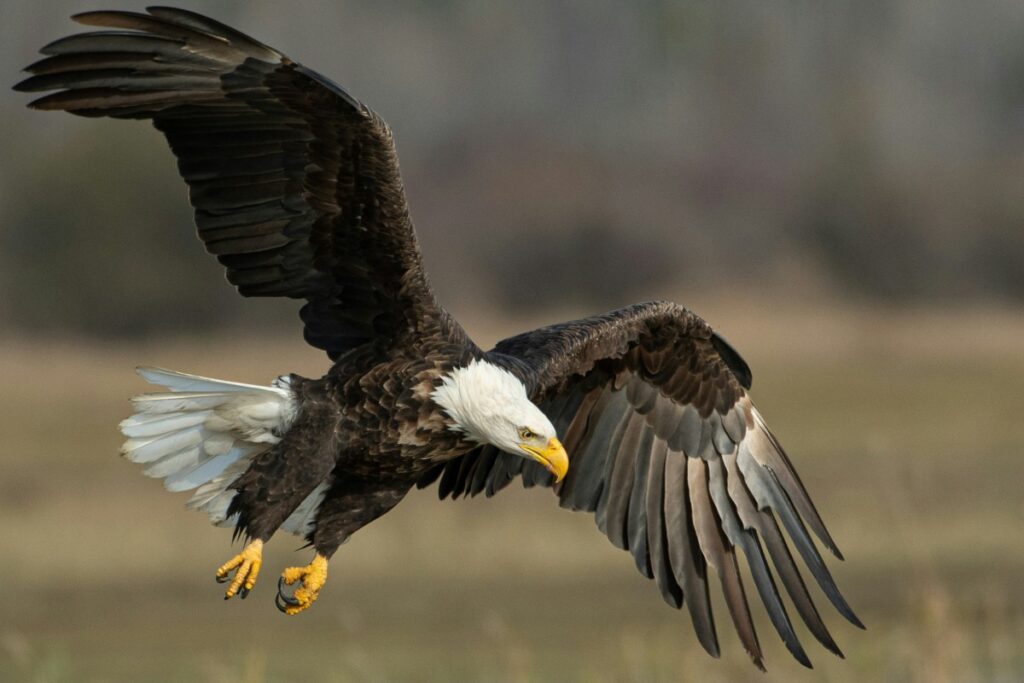
This diversity means that not all eagles are closely related, but they share key traits: impressive size, keen eyesight, and a predatory lifestyle that places them at the top of the avian food chain.
The word “eagle” itself has a rich linguistic history. It comes from the Anglo-Norman eagle and Middle French aigle, both tracing back to the Latin aquila.
This root is shared with modern Romance languages like Spanish (águila) and Portuguese (águia), reflecting the eagle’s longstanding presence in human culture.
In English, “eagle” is sometimes synonymous with older terms like “erne” or “earn,” derived from Old English earn and Proto-Germanic arnaz.
This etymology underscores how deeply embedded the eagle is in our collective consciousness.
One of the eagle’s defining features is its physical prowess. Take the bald eagle (Haliaeetus leucocephalus), for instance—its wingspan can reach up to 2.44 meters (8 feet), and females may weigh over 7 kilograms (15 pounds).
Compare this to the golden eagle (Aquila chrysaetos), where females can tip the scales at 6.4 kilograms (14 pounds) with a wingspan averaging 2.04 meters (6 feet 8 inches).
These measurements vary by subspecies and region, but they highlight the eagle’s status as a formidable predator.
Their beaks are heavy and hooked, perfect for tearing flesh, while their talons are razor-sharp, designed to grasp and subdue prey.
The Eagle’s Extraordinary Eyesight
If there’s one trait that sets the eagle apart, it’s its vision. Eagles possess some of the most powerful eyes in the animal kingdom, allowing them to spot prey from incredible distances.
The wedge-tailed eagle (Aquila audax), native to Australia, is said to have visual acuity twice that of a human’s.
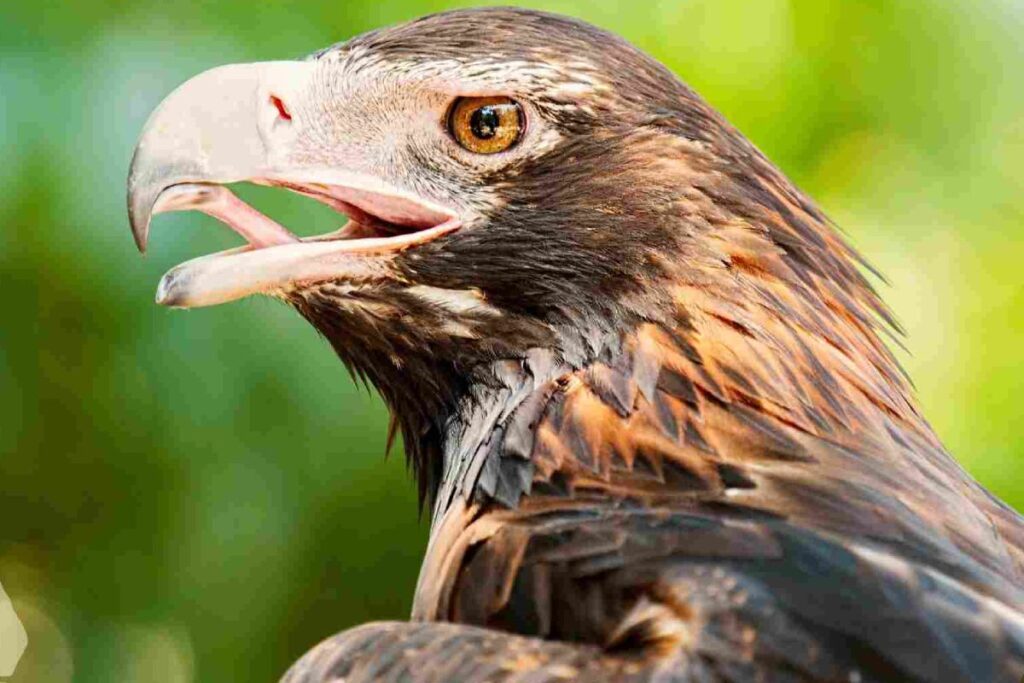
This remarkable eyesight stems from large pupils that minimize light diffraction, paired with a high density of photoreceptors in their retinas.
For an eagle soaring high above the landscape, a rabbit or fish far below is as clear as day. This acute vision is crucial for their hunting success.
Unlike nocturnal raptors like owls, eagles are diurnal, meaning they hunt during daylight hours.
However, they lack the ability to see ultraviolet light, a trait some other birds of prey possess.
This limitation doesn’t hinder them—eagles rely on their exceptional depth perception and color vision to pinpoint movement and strike with precision.
Whether it’s a golden eagle swooping down on a hare in the mountains or a white-bellied sea eagle (Haliaeetus leucogaster) snatching a fish from the ocean, their eyesight is a key to their dominance.
Eagle Habitats: Where Do They Thrive?
Eagles are incredibly adaptable, thriving in a variety of habitats worldwide.
Most of the 68 recognized eagle species hail from Eurasia and Africa, where they inhabit forests, mountains, grasslands, and coastal regions.
Outside this area, only 14 species are found: two in North America (the bald eagle and golden eagle), nine in Central and South America, and three in Australia.
This distribution reflects the eagle’s ability to exploit diverse ecosystems, from the Arctic tundra to tropical rainforests.
For example, the bald eagle’s range stretches across North America, from Alaska’s icy shores to Mexico’s northern deserts.
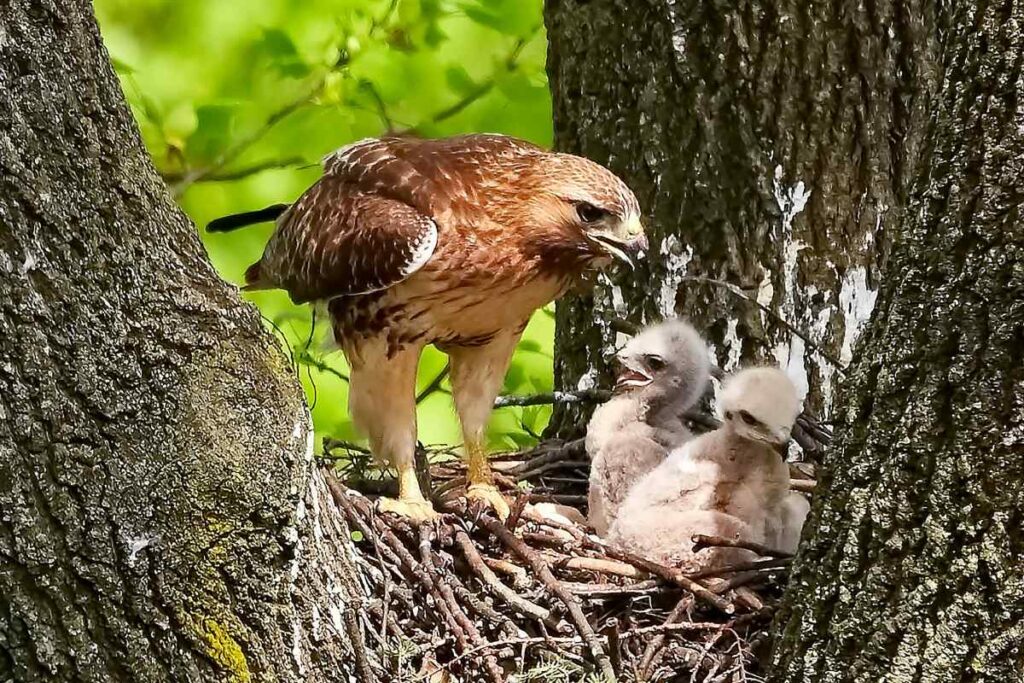
It favors areas near water—lakes, rivers, and coasts—where fish, its primary prey, are abundant.
Meanwhile, the harpy eagle (Har Pia harpyja), one of the world’s most powerful eagles, rules the rainforests of Central and South America, preying on sloths and monkeys in the canopy.
In contrast, the steppe eagle (Aquila nipalensis) roams the open plains of Central Asia, hunting ground-dwelling mammals and birds.
Eagles often build their nests, called eyries, in lofty locations—tall trees, cliff faces, or even man-made structures.
These nests can be massive; a bald eagle’s eyrie might weigh up to a ton and span several meters across, constructed from sticks and lined with softer materials like moss or grass.
The choice of such high perches reflects the eagle’s need for safety and a vantage point to survey its territory.
Hunting and Diet: The Eagle as Apex Predator
As apex predators, eagles sit atop the food chain, and their diet reflects their versatility.
The type of prey an eagle targets depends on its genus and habitat.
Sea eagles like the bald eagle and the white-tailed eagle (Haliaeetus albicilla) specialize in fish, often snatching them from the water’s surface with their talons.
The genus Ichthyophaga, including the African fish eagle (Ichthyophaga vocifer), takes this further, almost exclusively feeding on aquatic life.
Other eagles, like those in the genus Circaetus (snake-eagles), focus on reptiles, particularly snakes, which they hunt with deadly accuracy in Africa and Asia’s tropics.
The Aquila eagles, such as the golden eagle, are generalists, taking down medium-sized vertebrates—rabbits, hares, marmots, and even young deer.
In South America, the black-chested buzzard-eagle (Geranoaetus melanoleucus) fills a similar niche where Aquila species are absent.
Eagles employ varied hunting techniques. Most grab prey without landing, carrying it to a perch to eat.
The bald eagle, for instance, once flew with a 6.8-kilogram (15-pound) mule deer fawn—an astonishing feat verified as the heaviest load ever carried by a flying bird.
Some eagles tackle prey too heavy to lift, consuming it on the spot or dismembering it to bring back in pieces.
This adaptability ensures the eagle’s survival across vastly different environments.
Eagle Behavior and Life Cycle: Masters of the Sky
The eagle’s commanding presence is not just physical—it extends to its behavior, which showcases intelligence, strength, and resilience.
Eagles are solitary creatures for much of their lives, often patrolling vast territories alone or in mated pairs.
This solitude reflects their role as apex predators, requiring large areas to sustain their hunting needs.
Yet, the eagle is not entirely reclusive; during breeding season or when food is abundant, their interactions reveal a complex social dynamic that captivates birdwatchers and researchers alike.
Territorial Instincts and Aerial Displays
Territoriality is a hallmark of eagle behavior. A golden eagle, for instance, may claim a territory spanning 200 square kilometers (77 square miles) in rugged landscapes like the Scottish Highlands or the American West.
These territories are fiercely defended, especially during nesting season.
Eagles mark their dominance through breathtaking aerial displays—spiraling dives, talon-locking mid-flight, or soaring high above rivals.
These acrobatics are not just for show; they signal to intruders that this eagle means business.
The bald eagle, iconic in North America, performs similar feats. Pairs often engage in a courtship ritual where they lock talons and cartwheel through the sky, plummeting toward the ground before breaking apart at the last moment.
This dramatic display strengthens pair bonds and showcases the eagle’s agility.
Such behaviors highlight why the eagle has long been a symbol of power and freedom across cultures—it’s a bird that commands both earth and sky.
Reproduction: Building a Legacy
When it comes to raising young, the eagle demonstrates remarkable dedication. Most eagle species are monogamous, forming pair bonds that can last a lifetime.
Breeding season varies by region—bald eagles in North America typically mate in late winter or early spring, while the tropical harpy eagle breeds year-round.
Once paired, an eagle couple collaborates to construct or refurbish their eyrie, a process that can take weeks.
These nests are not temporary; many eagles return to the same site year after year, adding to it until it becomes a towering structure.
Egg-laying follows, with clutch sizes ranging from one to three eggs, depending on the species.

The golden eagle usually lays two eggs, though often only one chick survives due to sibling rivalry—a phenomenon called siblicide, common among eagles.
The female eagle does most of the incubating, which lasts 30 to 45 days, while the male hunts to provide food.
Once hatched, eaglets are altricial—helpless and featherless—relying entirely on their parents.
The eagle’s nurturing side shines here, as both adults tirelessly feed and protect their young.
Fledging, or the moment an eaglet takes its first flight, is a milestone.
For a bald eagle, this happens around 10 to 12 weeks after hatching, though the young may linger near the nest for months, honing their skills under parental supervision.
Golden eagle fledglings take slightly longer, often leaving at 12 to 14 weeks.
This extended care ensures the next generation of eagles is equipped to thrive in the wild—a testament to the eagle’s evolutionary success.
Eagle Lifespan and Survival Rate
Eagles are built for longevity. In the wild, a bald eagle might live 15 to 25 years, while a golden eagle can reach 30 years or more.
In captivity, where threats like predation and starvation are absent, some eagles have surpassed 50 years.
This lifespan is impressive for a bird facing constant environmental challenges, from harsh winters to habitat loss.
The eagle’s resilience is tied to its adaptability—whether scavenging carrion in lean times or hunting live prey when opportunity strikes, the eagle endures.
The Eagle’s Ecological Role: Guardians of Balance
Beyond their striking appearance and behavior, eagles play a vital role in maintaining ecological harmony.
As apex predators, they regulate populations of prey species, preventing overgrazing or overpopulation that could destabilize ecosystems.
This influence ripples through food webs, making the eagle a keystone species in many habitats.
Predators and Scavengers
The eagle’s diet shapes its ecological impact. Take the white-tailed eagle, Europe’s largest sea eagle, which feeds on fish, waterfowl, and carrion.
By preying on weaker or sick animals, it helps keep populations healthy, much like a natural cull.
In Africa, the martial eagle (Polemaetus bellicosus) targets small antelopes and birds, curbing their numbers in savanna ecosystems.
Even when eagles scavenge—as bald eagles often do along coastlines—they clean up carcasses, reducing disease spread.
This dual role as hunter and scavenger underscores the eagle’s versatility.
Unlike specialized predators tied to one food source, many eagles shift strategies based on availability.
The steppe eagle, for instance, feasts on small mammals during migration but switches to insects or carrion when prey is scarce.
This flexibility ensures the eagle’s survival while stabilizing the environments it inhabits.
Eagles as Indicators of Environmental Health
Eagles are often called “indicator species” because their well-being reflects the state of their surroundings.
A thriving eagle population signals clean water, abundant prey, and intact habitats.
Conversely, declining numbers can warn of pollution, overhunting, or climate shifts.
The African fish eagle’s melodious call, often heard near rivers and lakes, is a sign of aquatic vitality—where it fades, trouble looms.
By studying eagles, scientists gain insights into broader environmental trends, making these birds sentinels of the natural world.
The Eagle in Culture and Mythology: A Timeless Symbol
The eagle’s majestic flight and piercing gaze have made it more than just a bird—it’s a powerful symbol woven into the fabric of human history.
Across continents and centuries, the eagle has represented strength, vision, and transcendence, appearing in art, religion, and national identities.
Its ability to soar above the earth has cemented its status as a bridge between the mortal and the divine, a role that continues to resonate in modern times.
Eagles in Popular Culture
Today, the eagle’s image permeates society. Sports teams like the Philadelphia Eagles or Nigeria’s Super Eagles draw on its connotations of strength and agility.
Brands use the eagle in logos—think American Eagle Outfitters—capitalizing on its cool, confident vibe.

Even in video games and comics, the eagle appears as a noble ally or fierce foe, its versatility keeping it fresh for new generations.
This cultural staying power is not accidental. The eagle’s real-world traits—its piercing eyes, swift flight, and commanding presence—mirror qualities we admire: determination, clarity, and independence.
Whether spotted soaring over a national park or emblazoned on a flag, the eagle connects us to nature and history in a way few animals can.
Eagles in Ancient Mythology
In ancient cultures, the eagle often held a sacred place. For the Romans, the eagle was the emblem of Jupiter, king of the gods, and a standard carried by legions into battle—the aquila symbolized imperial might.
This reverence wasn’t unique to Rome; in Greek mythology, the eagle served Zeus, carrying his thunderbolts and even fetching the beautiful youth Ganymede to Mount Olympus.
The eagle’s association with the heavens made it a divine messenger, a role echoed in other traditions.
Among the Indigenous peoples of North America, the eagle’s spiritual significance runs deep.
For tribes like the Lakota and Haida, eagle feathers are sacred, bestowed in ceremonies to honor bravery or wisdom.
The bald eagle and golden eagle, native to the continent, are seen as carriers of prayers to the Creator, their soaring flights connecting the earthly and spiritual realms.
This reverence highlights the eagle’s dual nature—both a physical predator and a symbol of something greater.
In Mesopotamia, the eagle took on a more complex form as the double-headed Anzu bird, a creature tied to storms and cosmic power.
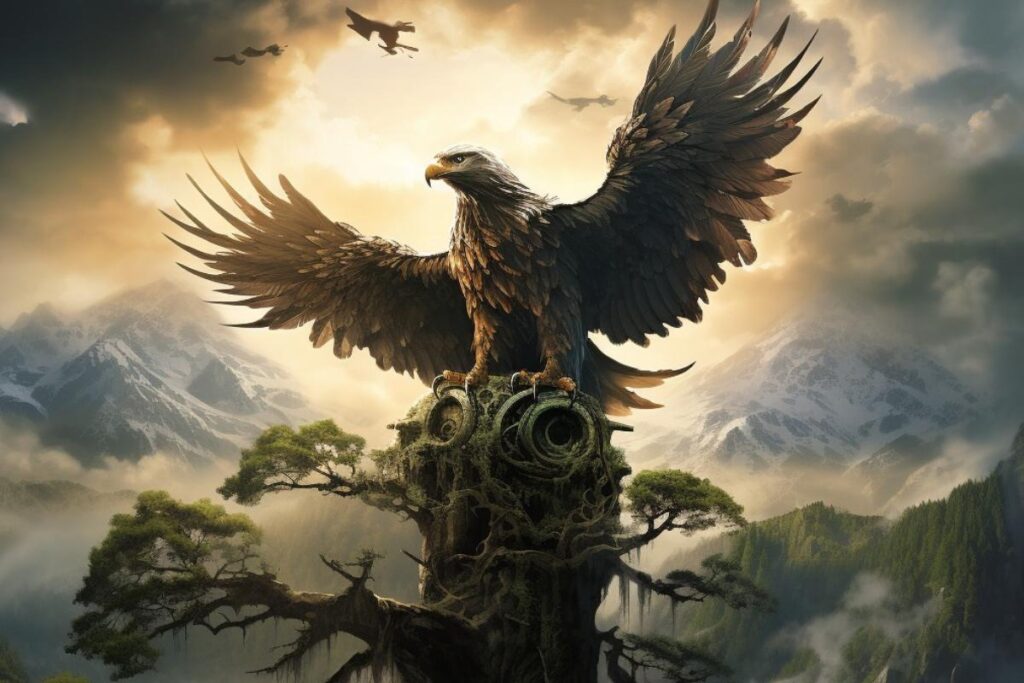
Similarly, in Norse mythology, an eagle perched atop Yggdrasil, the World Tree, surveyed the nine realms, its sharp eyes embodying omniscience.
In this mythology, Veðrfölnir, the majestic hawk, sits perched high atop Yggdrasil, the World Tree, observing all from its lofty position.
However, there is more to Veðrfölnir’s role. Veðrfölnir symbolizes the connection between the forces of life and death in Norse cosmology.
Across Africa and Asia, cultures integrate the eagle into their lore. The eagle serves as a symbol of awe and authority, evident in figures like Garuda within Hindu and Buddhist traditions.
Native American cultures also feature the eagle, most notably in the form of the thunderbird.
While Garuda represents wisdom, the thunderbird of Native American narratives embodies the raw power of storms.
These figures highlight the eagle’s universal appeal.
The Eagle as a National Symbol
The eagle’s symbolic power endures in modern nations, most famously with the bald eagle of the United States.
Adopted as the national bird in 1782, the bald eagle graces the Great Seal, clutching an olive branch and arrows to signify peace and strength.

This choice wasn’t without debate—Benjamin Franklin famously preferred the turkey—but the eagle’s regal bearing won out, reflecting America’s aspirations as a young nation.
Today, seeing a bald eagle in the wild stirs patriotic pride, a living emblem of freedom.
Other countries have embraced the eagle too. Poland’s white-tailed eagle adorns its coat of arms, a nod to medieval legends of the nation’s founding. Mexico’s flag features a crested caracara—an eagle-like raptor—devouring a snake atop a cactus, rooted in Aztec mythology.
In Russia, the double-headed eagle, inherited from Byzantine traditions, symbolizes dominion over East and West.
These examples show how the eagle transcends borders, its image adaptable yet consistently tied to sovereignty and vision.
Eagles in Art and Literature
Beyond flags and myths, the eagle inspires creativity.
In poetry, it often embodies aspiration—think of Alfred Tennyson’s “The Eagle,” where the bird “clasps the crag with crooked hands” before plunging to the sea.
Painters like John James Audubon captured the eagle’s essence in vivid detail, his bald eagle illustrations blending science and art.
Even in modern media, the eagle appears—whether in fantasy novels as a noble companion or in films soaring over dramatic landscapes, its presence evokes grandeur.
This artistic fascination is not just aesthetic; it reflects the eagle’s ability to stir human emotions.
The harpy eagle’s fierce stare or the golden eagle’s stoic perch atop a cliff taps into our admiration for nature’s untamed beauty.
Artists and writers use the eagle to explore themes of solitude, power, and the sublime, ensuring its legacy endures beyond the wild.
The Eagle Today: Conservation and Connection
In the 21st century, the eagle remains a focal point of human interest, bridging ecology and culture.
As we’ve seen, conservation efforts have revived species like the bald eagle, but challenges persist.
Climate change, habitat loss, and human encroachment threaten eagle populations worldwide, prompting ongoing efforts to protect them.
At the same time, the eagle’s symbolic weight keeps it relevant, from environmental campaigns to sports mascots.
Threats to Eagles and Conservation Efforts
Despite their prowess, eagles face significant threats. Habitat destruction, driven by deforestation and urbanization, shrinks their territories.
Pesticides like DDT, once rampant in the mid-20th century, decimated eagle populations by thinning eggshells—a crisis that hit the bald eagle particularly hard.
Illegal hunting and collisions with power lines or wind turbines also take a toll.
In Africa, the crowned eagle (Stephanoaetus coronatus) is losing its forest habitat to logging, pushing it toward endangerment.
Conservation efforts have turned the tide for some species.
The bald eagle successfully recovered from near extinction in the U.S., a success story resulting from banned pesticides and protected habitats.
This success led to its removal from the endangered species list in 2007.
Organizations like the International Union for Conservation of Nature (IUCN) monitor eagle populations.
They classify many species as ‘Least Concern,’ but designate others, such as the Philippine eagle, as critically endangered.
Protecting the eagle means safeguarding the ecosystems it supports—a mission that resonates globally.
Modern Conservation Successes
The bald eagle’s resurgence is a beacon of hope. DDT poisoning drastically reduced its population to fewer than 500 nesting pairs in the contiguous U.S.
However, legal protections and public awareness dramatically increased their numbers. By the early 2000s, the population soared to over 10,000 pairs.
Similar recoveries are underway elsewhere—the white-tailed eagle, nearly extinct in Europe by the 19th century, now thrives in places like Scotland and Norway due to reintroduction programs.
These successes show that when humans rally behind the eagle, it can reclaim the skies.
Yet, not all eagles fare as well. The Philippine eagle, with fewer than 400 individuals left in the wild, faces deforestation and poaching.
Known locally as the “monkey-eating eagle,” its plight highlights the fragility of tropical ecosystems.
Conservationists use satellite tracking and community education to save it, proving that the eagle’s survival depends on global cooperation.
Iconic Eagle Species: Diversity in the Skies
While the term “eagle” encompasses a wide range of birds, certain species stand out for their distinct traits and habitats.
From the rainforests of South America to the cliffs of Australia, these eagles showcase the adaptability and splendor of this remarkable group.
Let’s explore some of the most iconic eagles, each a testament to the diversity and resilience that define the eagle family.
The Bald Eagle: America’s Emblem
The bald eagle (Haliaeetus leucocephalus) is perhaps the most recognized eagle worldwide, thanks to its role as the United States’ national symbol.
Despite its name, this eagle is not bald—its white-feathered head contrasts sharply with its dark brown body, a striking look that emerges after four to five years of maturity.
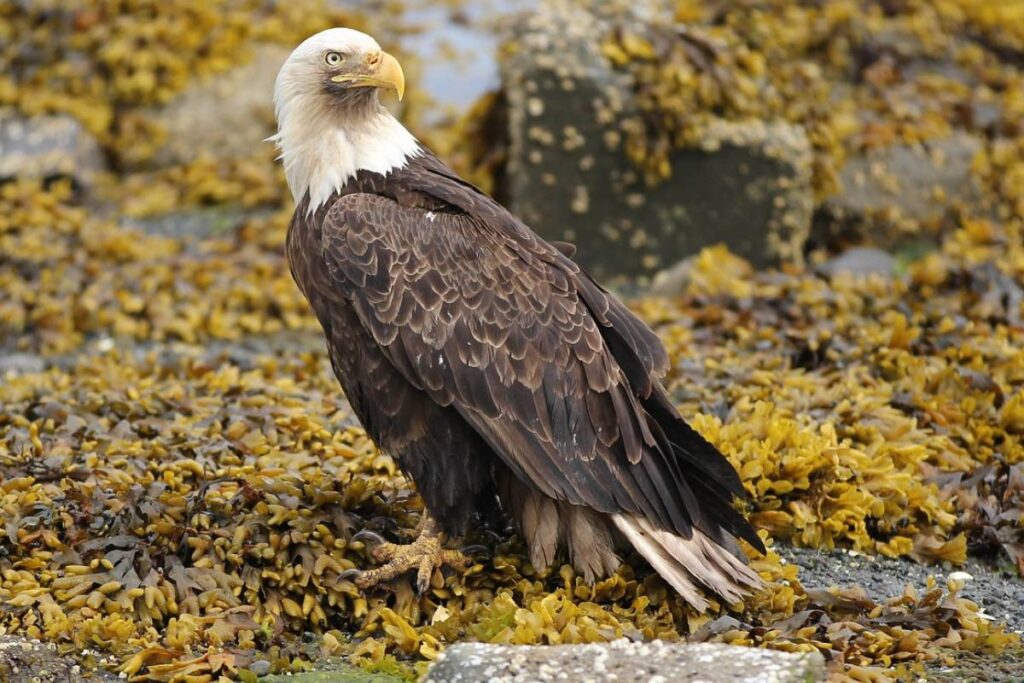
Bald eagles live across North America and thrive near water, primarily eating fish such as salmon and trout. However, they also scavenge and steal from other birds, a behavior known as kleptoparasitism.
This eagle’s recovery from near extinction is a conservation triumph.
Its powerful silhouette, often seen perched on a riverside tree or gliding over lakes, embodies resilience.
Female bald eagles possess a wingspan of up to 2.44 meters (8 feet). They weigh close to 7 kilograms (15 pounds). This makes them heavyweights among sea eagles.
Their presence reminds us of nature’s remarkable ability to rebound when given a chance.
The Golden Eagle: Hunter of the Highlands
The golden eagle (Aquila chrysaetos) is the quintessential mountain eagle, its rich brown plumage flecked with golden hues on its nape.
Found across the Northern Hemisphere—from North America’s Rockies to Europe’s Alps and Asia’s steppes—this eagle is a master of rugged terrain.
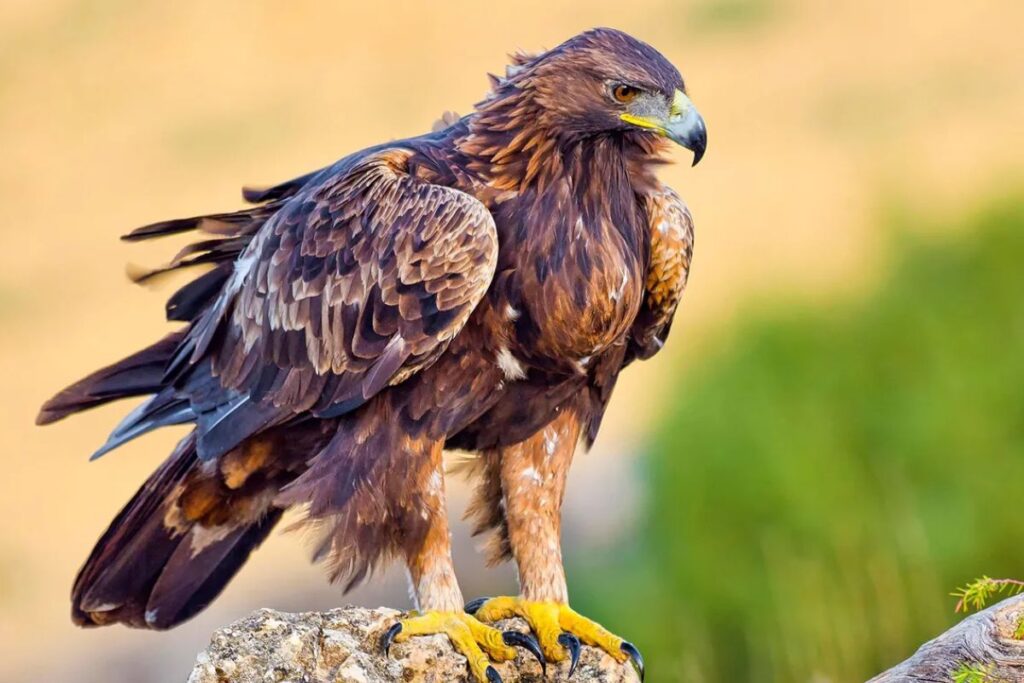
It preys on mammals like hares, marmots, and even young ungulates, using its agility to strike from above.
With a wingspan averaging 2.04 meters (6 feet 8 inches) and talons capable of exerting crushing force, the golden eagle is a hunter par excellence.
Known for its stoic demeanor, the golden eagle often perches motionless, scanning the landscape with eyes that can spot prey over 3 kilometers (1.9 miles) away.
In falconry, it’s prized for its strength, a tradition spanning centuries in Central Asia.
The golden eagle’s wild grace and predatory skill make it a favorite among wildlife enthusiasts, its soaring flights a symbol of untamed freedom.
The Harpy Eagle: Rainforest Ruler
Deep in the rainforests of Central and South America reigns the harpy eagle (Harpia harpyja), one of the world’s most powerful eagles.
Named after the harpies of Greek mythology, this bird is a force of nature, with talons as long as grizzly bear claws and a grip strong enough to crush bone.
Harpy eagles dominate the forest canopy. They actively hunt sloths, monkeys, and large birds.
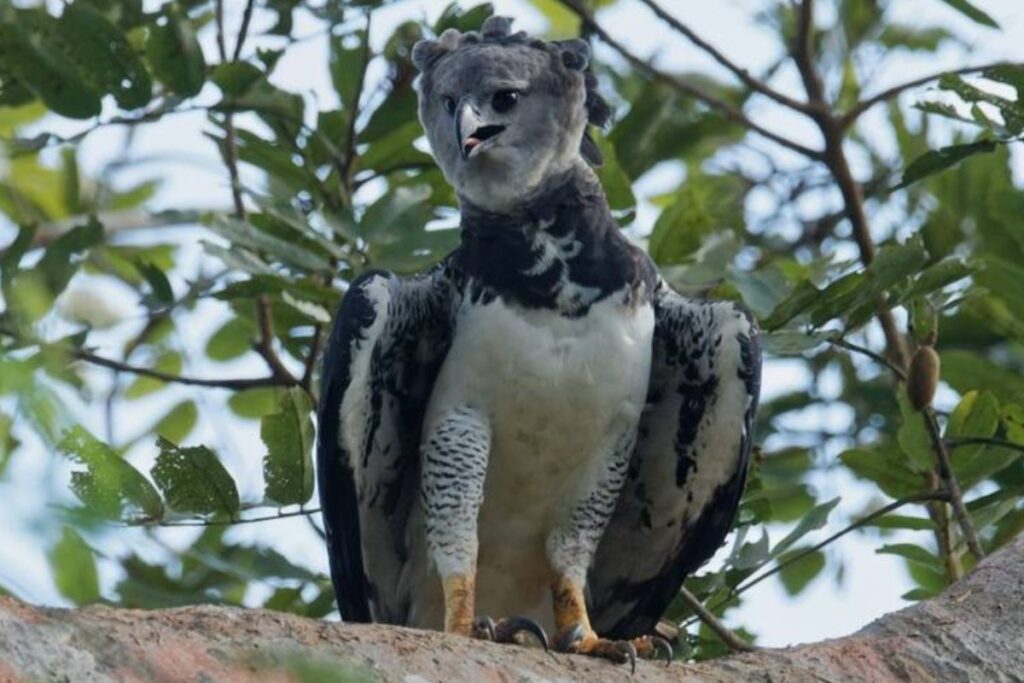
Female harpy eagles are particularly large, with weights reaching 9 kilograms (20 pounds) and wingspans of 2.26 meters (7 feet 4 inches).
Its slate-gray feathers, double crest, and piercing stare give it an almost mythical appearance.
The harpy eagle’s habitat—pristine tropical forests—is under threat, making conservation critical.
Indigenous peoples like the Huaorani of Ecuador revere it as a guardian spirit, a nod to its dominance in an ecosystem where few predators rival its might.
Encountering a harpy eagle in the wild is rare, but its presence leaves an indelible mark.
The Philippine Eagle: A National Treasure
The Philippine eagle (Pithecophaga jefferyi), also called the monkey-eating eagle, is a critically endangered giant of Southeast Asia’s forests.
With a wingspan reaching 2 meters (6 feet 7 inches) and a height of up to 1 meter (3 feet 3 inches), it’s one of the tallest eagles.
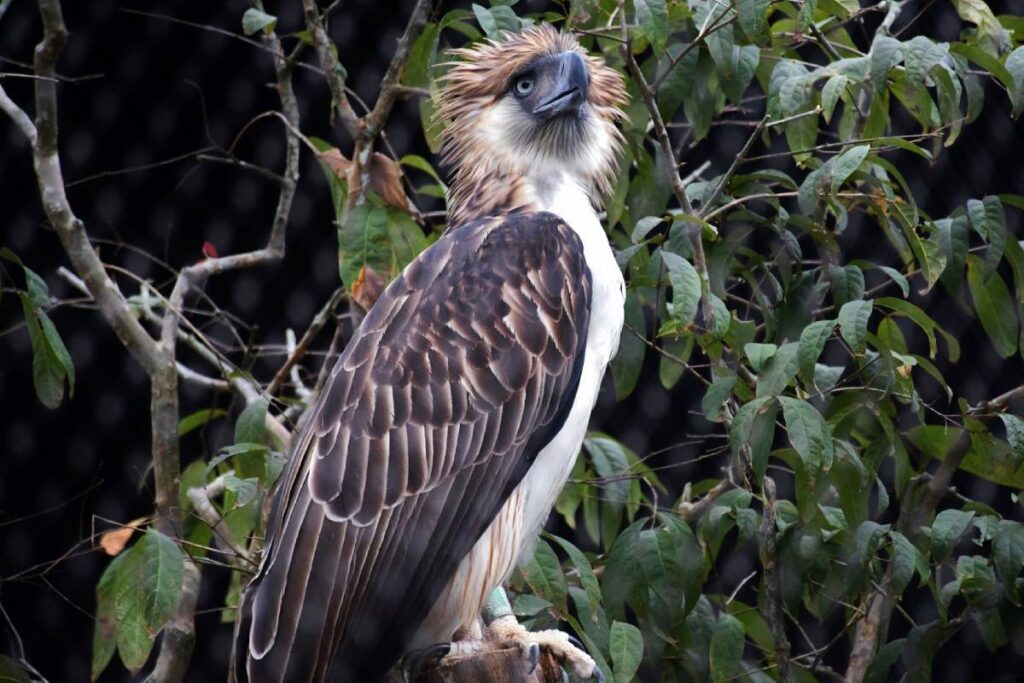
Its blue-gray eyes, shaggy crest, and massive beak set it apart, while its diet of monkeys, bats, and flying lemurs reflects its specialized niche.
Found only in the Philippines, this eagle is a national symbol, dubbed the “King of Philippine Skies.”
Sadly, fewer than 400 remain due to deforestation and hunting.
Efforts to save the Philippine eagle include captive breeding and habitat protection, but its future hangs in the balance.
For Filipinos, it’s more than a bird—it’s a call to preserve their natural heritage, a living link to the archipelago’s wild past.
The Wedge-Tailed Eagle: Australia’s Sky Sovereign
Australia’s wedge-tailed eagle (Aquila audax) rules the Outback with a wingspan that can exceed 2.84 meters (9 feet 4 inches)—the largest of any eagle.
Its wedge-shaped tail and dark brown feathers make it unmistakable as it soars over deserts and woodlands.
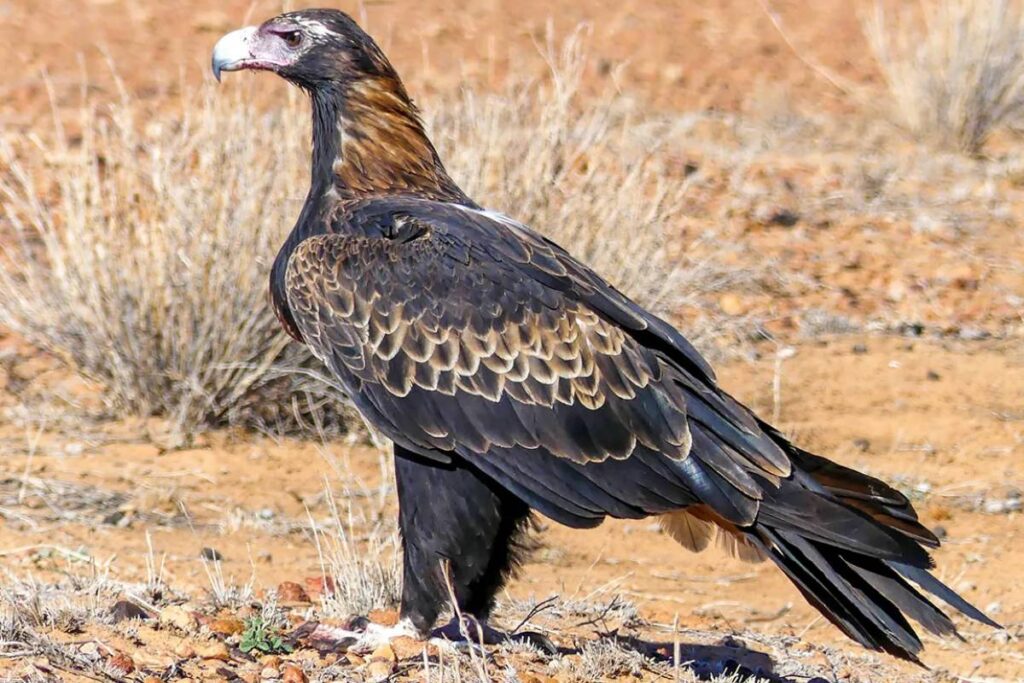
This eagle preys on kangaroos, rabbits, and carrion, often hunting in pairs to tackle larger quarry.
Its eyesight, twice as sharp as a human’s, lets it spot movement from kilometers away.
Aboriginal stories cast the wedge-tailed eagle as a creator figure, shaping the land from above.
Today, it’s both admired and occasionally vilified by farmers who blame it for livestock losses—a conflict that echoes the eagle’s dual role as predator and cultural icon.
Its vast range and adaptability ensure it remains a fixture of Australia’s skies.
Engaging with Eagles Today
Many opportunities exist for those eager to see eagles up close. National parks, like Yellowstone (golden eagles) and Alaska’s Chilkat Bald Eagle Preserve (bald eagles), offer prime viewing.
These parks also guide visitors with tours and educate them through programs that illuminate eagle behavior and ecology.
Rehabilitation centers often host public events where individuals can witness the recovery and release of injured eagles, fostering a deeper connection with these majestic birds.
Furthermore, Birdwatching festivals celebrate the eagle’s return each year, while webcams stream live footage of nests, bringing their intimate lives into our homes.
These encounters remind us why the eagle matters—not just as a species, but as a symbol of what’s worth preserving.
Final Note
The eagle is more than a bird—it’s a marvel of evolution, a keystone of ecosystems, and a mirror to human aspirations.
From the bald eagle’s triumphant return to the harpy eagle’s rainforest reign, these birds embody strength, adaptability, and grace.
Their keen vision and soaring flights have inspired myths, shaped nations, and driven conservation efforts, proving their relevance spans far beyond biology.
Ecologically, the eagle maintains balance, controlling prey populations and signaling environmental health.
Culturally, it stands for freedom and power, its image etched into flags, art, and lore.
Yet, the eagle’s future is not guaranteed—threats like habitat loss and climate change demand our attention.
Protecting the eagle means protecting the wild places it calls home, a mission that unites science and sentiment.
As you watch an eagle glide overhead or hear its call echo across a valley, consider its journey—from ancient skies to modern challenges.
Whether it’s the golden eagle hunting in the mountains or the Philippine eagle clinging to survival, each species tells a story of endurance.
The eagle’s legacy is ours to steward, a reminder that in safeguarding these magnificent birds, we preserve a piece of the world’s wild heart.
At Facts and Tips, we strive for accuracy and honesty.
If you notice any errors, whether factual, editorial, or outdated information, please don't hesitate to contact us.
Found this article about Eagle informative and useful? Share it with your friends and colleagues—they might find it helpful too!

